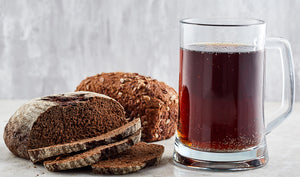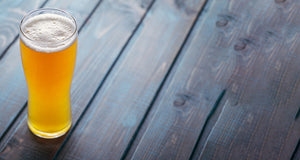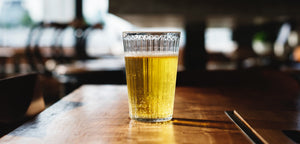Country of Origin

History
A style of wheat beer, Witbier (“white beer”) originated in 14th Century Monasteries in Belgium. The village of Hoegaarden is widely regarded as the birthplace of Witbier.
Known for its light, tart and spicy taste, Witbiers were originally brewed with local herbs and spices, most notably coriander. As hops gained in popularity as a bittering herb, many Witbier brewers left behind their local herbs and spices, changing the taste profile of Witbiers.
In the 1800’s as Lagers became the beer style of choice in Europe, Witbiers lost their foothold in the Belgian brewing market. While some traditional Witbiers are still being brewed, it is more common and easier to find German Hefeweizens than a classic Belgian style Witbiers.
Profile
Unfiltered, Witbiers have a hazy and cloudy appearance, ranging in colour from light straw to an light orange-yellow. With a high carbonation, this style has an effervescent and light taste, and a white creamy head with good retention. A good Witbier should have a hint of spice that doesn’t overpower the overall flavour, and a light hop taste.
Serving
A tulip glass is the traditional way to serve a Witbier. You don’t want a Witbier too cold either, 40-45 ℉ is the ideal serving temperature.
Food Pairing
Witbier pairs well with light food such as shellfish, salads or cheese. If you have a bottle of home brewed Witbier to spare, it also acts as an excellent marinade for chicken.



Brewing Tips
-
Use light coloured malts. It’s called “Witbier / White Beer” for a reason. One of the main characteristics of a Witbier is it’s pale white-yellow appearance.
-
Lay off the spices. Yes, Witbiers are known for their spice profile, but you can easily overdue it when brewing. Make coriander your main spice, not the only spice. And crush whole spices on your brew day, not before.
-
Use Belgian yeast. They’re usually more expensive but to get a proper authentic Witbier you need to go to the source.
-
Slow ferment temperature increase. Witbiers work best when you can slowly increase the fermentation temperature. Start around 62-65 ℉ and when it looks like the fermentation is complete, take 2-3 days to slowly raise the temperature to 70-75 ℉.
Want to brew your own Witbier?
Try Brew HQ's Belgian Wit Recipe Kit.



